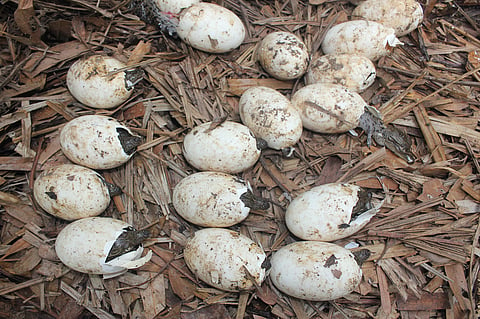

Around 2,500 hatchlings were found in 84 nests of saltwater crocodiles at the Bhitarkanika National Park in Odisha this year, according to the state’s forest department.
In 2020, the number of estuarine crocodile nests was 103 nests and 3,000 hatchlings were counted in them, said JD Pati, divisional forest officer (DFO) of the park.
Inundation of the stretches in the park and tidal waves during Cyclone Yaas in May 2021 are some of the reasons behind the decline, added the forest officer.
In May and June, the crocodiles build nests with mangrove twigs, leaves and mud on high ground, which will remain dry and get direct sunlight. “Heavy tidal waves during Cyclone Yaas damaged many nests,” the forest officer said.
A female crocodile lays 40-60 eggs that are incubated for almost 80 days. Only about half of these eggs hatch and just one in every 500 hatchlings survives predator attacks and grows into adults, said Sudhakar Kar, a noted crocodile expert.
The forest officials had imposed a three-month entry ban at the National Park during the nesting period of the reptiles as the mother crocodiles need a tranquil environment during mating, added Kar.
In 1975, the Union Ministry of Forest and Environment, in collaboration with the United Nations Development Programme, started a crocodile breeding and rearing project in Dangamalla within the national park.
The crocodile population in the park has grown to 1,768 in 2021 from 96 in 1974 — the country’s biggest saltwater crocodile conservation success story.
In 2006, a 23-foot crocodile found in Bhitarkanika was noted as the world’s largest estuarine crocodile in the Guinness Book of World Records, added Kar.